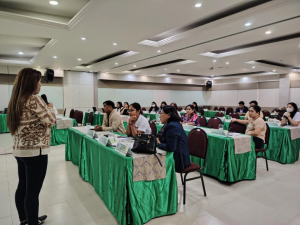The Regional Program Management Office of the Pag-abot Program in DSWD 7 – Central Visayas recently underwent an orientation on the Conduct of Reach-out Operations held on June 25–26, 2025, in Cebu City.

The National Program Management Office facilitated this technical assistance activity and provided inputs and various strategies for reaching out to families, individuals, children, and indigenous peoples in street situations.
The orientation was vital to ensuring the effective implementation of the program at the regional level and firmly established the creation of a Regional Inter-Agency Committee, essential for promoting a harmonized, coordinated, and holistic approach in addressing the complex and interrelated issues faced by those in street situations.
Highlights of the activity included the presentation of an overview of families and children in street situations in the cities of Cebu, Mandaue, Lapu-Lapu, and Talisay, as well as an ocular visit to the Anti-Mendicancy Reach-out Center of Cebu City—The Samaritan’s Rest.
Representatives from the regional offices of the Department of Education, Department of Trade and Industry, National Housing Authority, Technical Education and Skills Development Authority, Commission on Human Rights, and Department of Agriculture, as well as staff from the social welfare and development offices of the cities of Lapu-Lapu, Mandaue, and Talisay, attended the orientation.
DSWD 7 internal partners from various programs offering social welfare and development interventions and services were also present during the activity.
The Pag-abot Program, one of the national government’s flagship initiatives, aims to uplift vulnerable sectors—including children, families, and individuals in street situations—by providing essential social support and targeted interventions tailored to their specific needs. This initiative also strives to enhance the well-being of each beneficiary, empowering them to transition toward a stable, dignified, and productive life.
The program aims to reduce risks and vulnerabilities among children, individuals, and families experiencing street situations by providing a range of interventions, services, and opportunities. It aims to improve their social status and fulfill their fundamental rights, enabling them to live safely, productively, and with dignity in a supportive and inclusive environment. ###